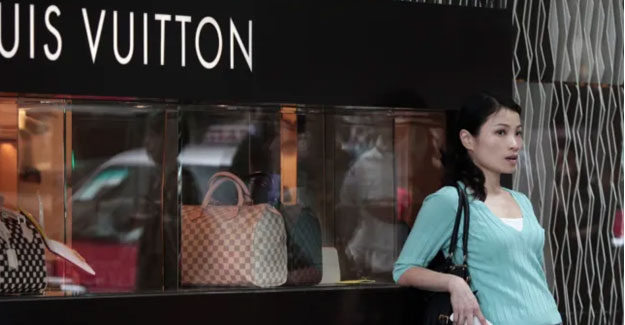China Remains A Difficult Market For Foreign Brands
- Social media posts of sales at Gap stores in China fuelled further speculation that another foreign clothing brand is set to reduce its footprint
- H&M, Old Navy, Top Shop, New Look, Bershka, Pull&Bear and Stradivarius have either withdrawn or reduced their business in China in recent years
China is one of the largest apparel consumer markets in the world. But global fashion brands are finding the going difficult in this market, despite their decades of experience across the globe.
A surge in nationalism especially among the young consumers is the latest obstacle for global fashion brands trying to make a mark in the Chinese market. Moreover, Chinese consumers have become more price conscious, and fashion conscious, and many western brands fail on both these fronts.
Global brands are reducing their footprint in China
Global fashion brands continue to reduce their footprint in an “extremely competitive” Chinese market that may be becoming more hostile to outside labels amid a surge of nationalism that has boosted demand for domestic labels. Clothing and accessories retailer Gap has been reducing its number of stores in mainland China since opening its 200th in Xian in 2019. As of this month, the figure has fallen to 143, according to its official website.
According to its first-quarter earnings report, GAP Group’s sales fell by 13% year on year to US$ 3.5 billion, taking net losses to US$ 162 million. H&M, which drew criticism for being the first company in China to publicly boycott Xinjiang cotton, reported a nearly 40% year on year decline in sales in China in its fourth quarter 2021 fiscal results.
H&M announced the closure of its flagship Shanghai store at the end of June, but returned to Tmall earlier this month having previously been dropped from business-to-consumer online retail platform in March last year. Old Navy, which is owned by Gap Group, closed all its stores and exited the Chinese market in March 2020 after six years in the country to focus its business on maximising efficiency in North America.
British clothing brands Top Shop and New Look had earlier suspended their operations in China in 2018 due to weak performance. Bershka, Pull&Bear and Stradivarius, all brands under the same Inditex Group as Zara, all closed their online stores as of the end of July.
Price conscious, nationalistic consumers prefer Chinese brands
“The clothes market in China is extremely competitive,” said Ma Zhongyuan, the manager of Quanzhou Fangma, a garment factory in Fujian province, who has 20 years of experience in garment processing.
Foreign brands are, according to Ma, struggling to compete with domestic brands who leverage large social media followings to offer cheaper products at lower prices via live-streaming and e-commerce platforms.
“Chinese e-commerce users can buy clothing products for less than 50 yuan (US$7.3), and buy two and three pieces and also get free shipping,” he added. “This low-price model via Chinese e-commerce platforms is ideal for Chinese consumers in a downward economic environment due to the pandemic.”
Data from iiMedia Research showed that 62% of Chinese consumers will buy clothes via e-commerce platforms in 2022, while 58.5% of all customers spend between 201 and 600 yuan on making clothing purchases via traditional offline and online platforms combined. “However, the price of brands such as Gap and Zara are concentrated in the 300-600 yuan range, which cannot compete with local, inexpensive brands,” Ma added.
The rise of nationalism is also stimulating the apparel industry to adopt more Chinese elements, with “being a Chinese brand” and “having Chinese elements” top considerations for young Chinese consumers, according to the “China Youth Consumption Report” from iiMedia Research.
The boycott of Xinjiang cotton by predominantly Western firms further exacerbated the trend, with Baidu’s 2021 big-data search report showing that the search volume of Chinese clothing brands increased by 137% after the moves due to concerns over human rights, which China has denied.
“Especially the young kids who are under 20-years-old, they will check if it’s a US brand,” said Yanie Yanson, founder of fashion and lifestyle brand creative agency Pompom. “What we realise is that now, we have to use the Guochao (Chinese trend) requirement, we have to insert red symbols, we have to insert traditional items.”
Chinese consumers reject monotonous designs of global brands
Along with nationalism, monotonous designs are also holding back overseas fast fashion brands as they do not have a unique design style, Yanie added. “When people can’t differentiate you from one store to the other, there must be a problem,” she said.
Yanie highlighted the lower prices, diverse designs, and higher quality offered by Chinese brands, with overseas fast fashion brands unlikely to respond to changes in design style to suit the aesthetics of Chinese consumers. “Being adventurous for a CEO is very dangerous because they have probably two years to prove themselves,” Yanie said.
Textile Excellence
Previous News
iran makes first multi-million dollar imports using cryptocurrency
Next News
textiles committee celebrates its 58th foundation day









